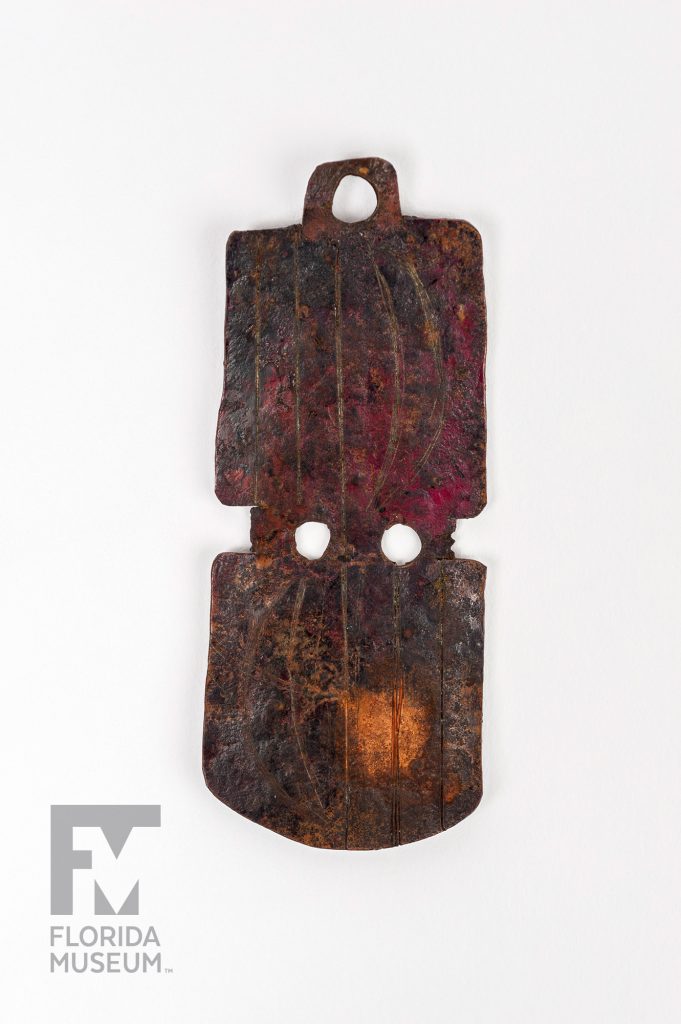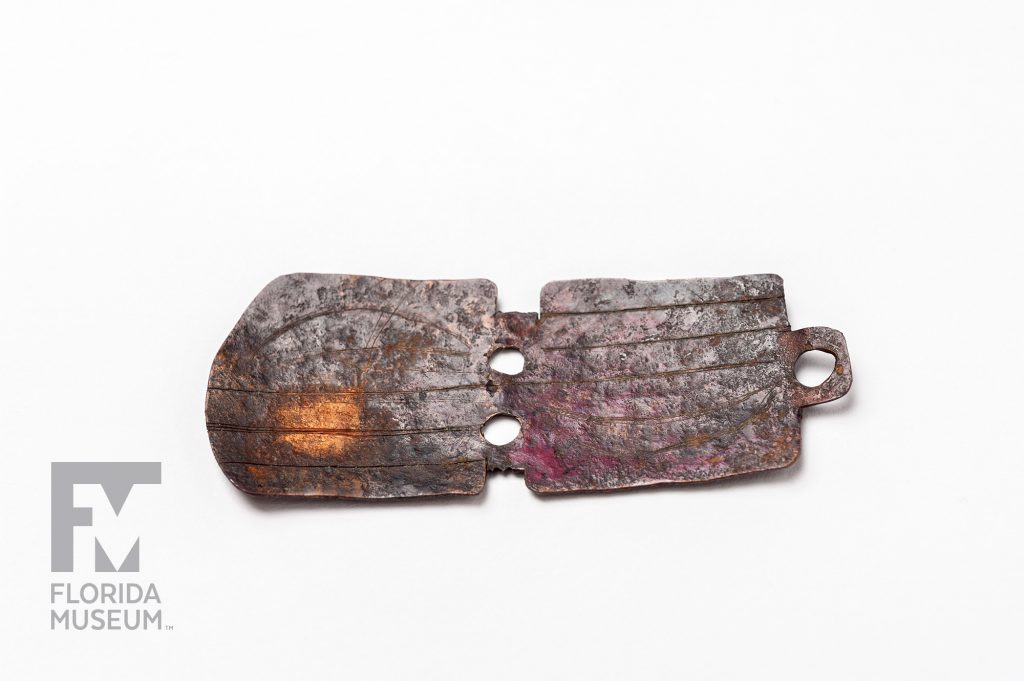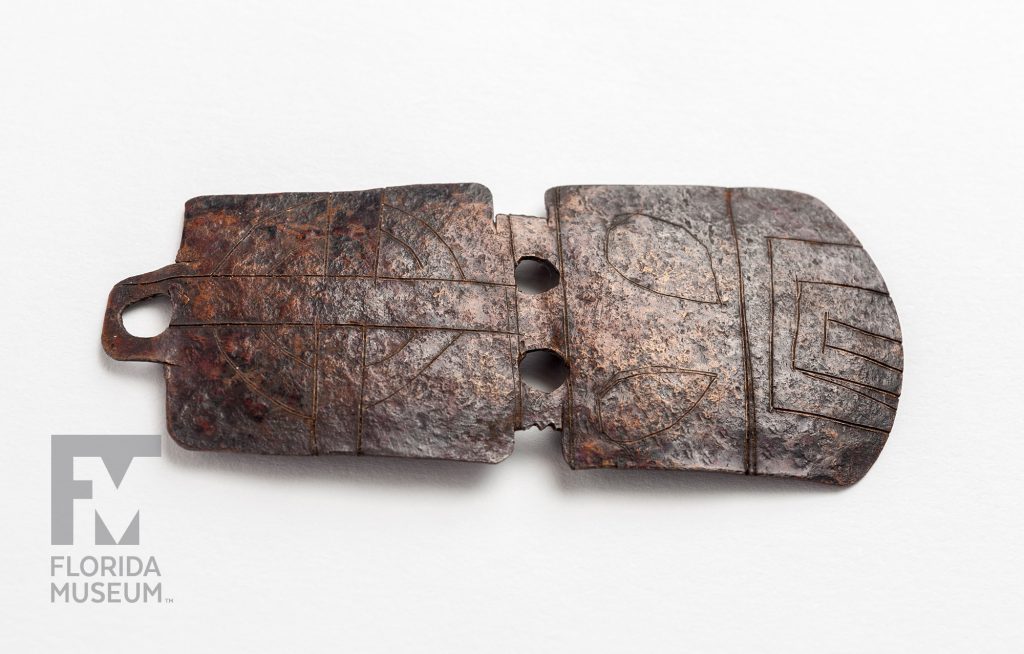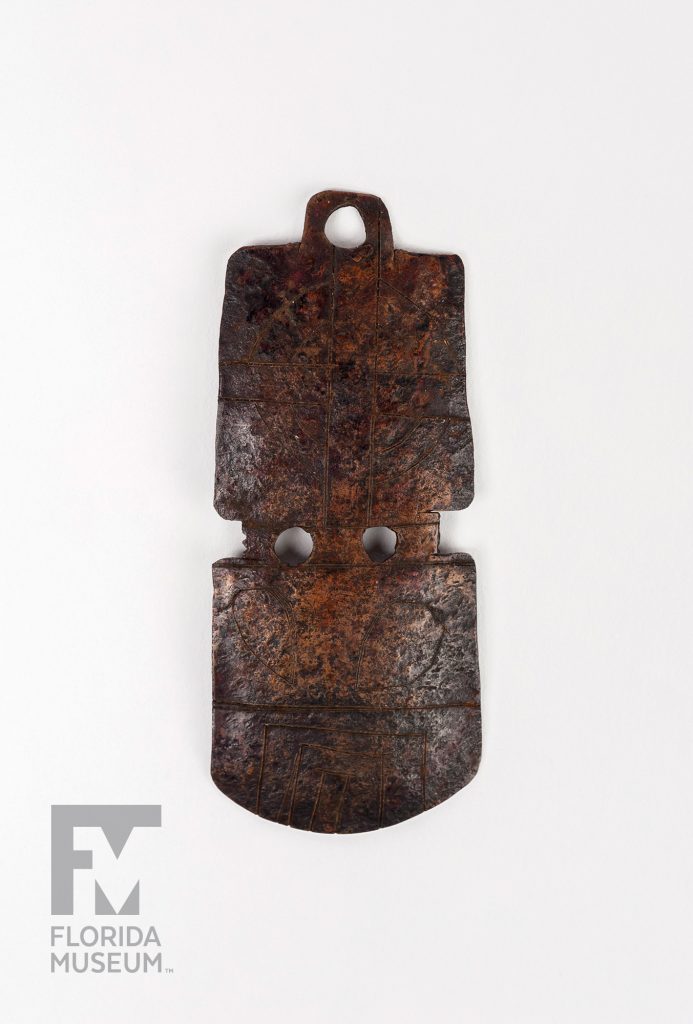Native Floridians recovered various metals from European shipwrecks off Florida’s coasts and re-fashioned the metal into objects and ornaments using traditional techniques, forms and decoration. Although their cultural meaning is unknown, their beauty remains.
Summary
Copper Medallion
Made by Belle Glade people, Highlands Co., Florida
Dates to 1550–1700
Collection
Story
This is one of only about five dozen metal medallions found in South Florida archaeological sites. They are sometimes called “ceremonial tablets.” They have a common shape and similar markings, but each one is unique. Archaeologists found this one at the Blueberry Site in Highlands County. The property owners, Anne and Charles Reynolds, donated the entire collection to our Museum where it is being actively studied by students.
This example is unusual because it is made of pure copper, not a copper alloy. It’s about two and three-quarters inches high and a little over an inch wide. These medallions were apparently meant to be worn as pendants because they have a small tab with a hole on the end.
Metals such as copper are not native to Florida. The closest source of copper in the U.S. is in North Carolina, Virginia and Tennessee. But more likely the Indians salvaged metals from Spanish shipwrecks and then reworked them into these unusual medallions. They may have been worn by either town chiefs or religious leaders.
Bill Marquardt
Curator, South Florida Archaeology & Ethnography*
Director, Randell Research Center*
Florida Museum of Natural History
Exhibit
On display Sept. 23, 2017-Jan. 7, 2018, Rare, Beautiful & Fascinating: 100 Years @FloridaMuseum celebrated the Museum’s rich history. Each Museum collection was asked to contribute its most interesting items and share the stories that make them special. Though the physical exhibit is closed, this companion website remains online, providing an opportunity to experience the Florida Museum’s most treasured specimens.
Exhibit Area: Objects Tell Stories
Theme: Blended Cultures
 Want to see more? Explore more than 300 breathtaking color photos of plants, animals, fossils and cultural heritage materials from the Florida Museum of Natural History’s collections in the award-winning book All Things Beautiful available from the University Press of Florida.
Want to see more? Explore more than 300 breathtaking color photos of plants, animals, fossils and cultural heritage materials from the Florida Museum of Natural History’s collections in the award-winning book All Things Beautiful available from the University Press of Florida.
*This title was accurate at the time the exhibit was on display in 2017. Please visit the collection website to verify current staff and student information.



